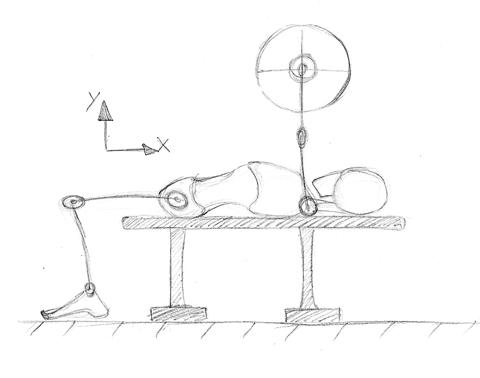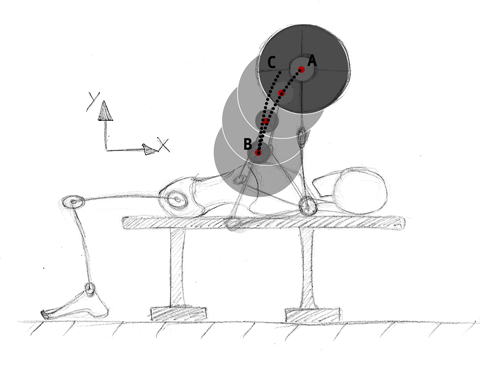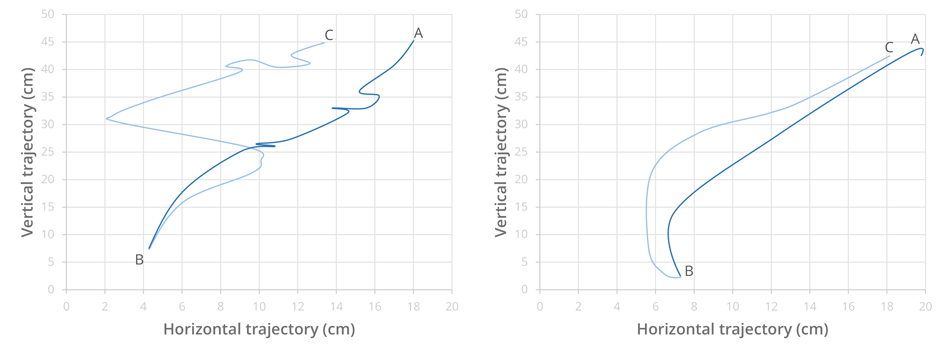
The bench press is a weight training exercise. In powerlifting, the bench press is one of the 3 main movements. It consists of lying on your back on a flat bench with your head, shoulders and butts in contact with the surface of the bench, and your feet flat on the floor. The arms are in an extended position and hold a loaded bar vertically. After the starting signal of a judge, the movement is executed by flexing the upper limbs to bring the loaded bar into contact with the chest. Again, at the signal of a referee, the athlete will have to extend the upper limbs to return to the starting position (i.e., arms locked in an extended position). For more information on Athletic Strength, visit the official website of I.P.F.
In a previous article, we explained how a bench shirt allows a better performance and a greater speed during the concentric phase in bench press compared to a movement without shirt (Click to read this article).If the mechanical characteristics of the shirt play a major role in the enhancement of the performance, it is interesting to know what is the impact of the shirt on bar trajectory.
To know more about that, in 2009, a team of American researchers studied the trajectory in the sagittal plane of the bar during the bench press in two conditions: without and with bench shirt.

Figure 1. Sagittal view of the athlete in a bench press position.

Figure 2. Trajectory of the bar in the sagittal plane (From point A to point C).
The sagittal plane is oriented from front to back and from top to bottom. If you observe the right profile of a person, then you have a sagittal view of that person. Figure 1 illustrates a sagittal view of the athlete in a bench press position. Axes and anatomical planes are described in the chapter devoted to the anatomical description of movement in the biomechanics course of sport and exercise.
For this study, tests were conducted on 5 subjects experienced in resistance training but who had no previous experience in competition with the use of a shirt. Each subject had to perform a bench press with and without a shirt with a load equivalent to the maximum load allowing only one repetition of movement (i.e., 1RM).
To analyze the differences in trajectory between the two conditions, the researchers used video analysis. A camera, whose recording frequency is 60 Hz, was placed 4-6 m on the side of the bench to film in the sagittal plane, as shown in Figure 2. A marker was placed at the end of the bar. This marker is represented by a red dot in Figure 2. We will come back in more detail on the methods of motion analysis in the biomechanics course of sport and exercise.
From the data obtained, they studied the differences in horizontal and vertical trajectory that existed between the two conditions. Differences in each condition between the trajectory made by the athlete's bar and the ideal trajectories between the starting point (A) and the point of contact with the chest (B) and between the point of contact with the chest and the chest. point of arrival (C) (Fig. 2) have also been studied. The ideal trajectories are, for the authors, straight paths.
The results of this study show that the distance traveled by the bar on the vertical axis (i.e., Y axis) is significantly shorter when the athletes wear the shirt. On the other hand, there are no significant differences in the distance traveled on the horizontal axis (i.e., X axis) under both conditions.

Figure 3. Example of trajectory of the bar in the sagittal plane for a subject during the trials 'without shirt' and 'with shirt'. The bench shirt allows for a more uniform and linear trajectory. Point A represents the starting point, point B represents the point of contact with the chest and point C is the point of arrival.
Nevertheless, these researchers observed a significant difference in the "no shirt" condition between the trajectory observed on the X axis and the ideal trajectory, and between the total distance traveled by the bar and the ideal trajectory. No significant difference was observed in the "with shirt" condition between the observed and ideal trajectories.
Figure 3 illustrates perfectly the results of this study. The range of motion on the vertical axis is smaller with the bench shirt. The shirt reduces the work required to move the bar. The work of a force (W, in Joules) corresponds to the energy provided by this force when its point of application moves. The work is equal to the product of the force (F, in Newton) by the displacement (d, in meters) of its point of application in the direction of this force.
The results do not show any significant differences in the range of motion on the horizontal axis between the two conditions. Nevertheless, in this range of motion, the bar travels a longer distance when the athlete is without a shirt. This can be explained by the greater freedom of movement in the "without shirt" condition. But this greater freedom of movement is less efficient mechanically speaking. The shirt seems to allow a stabilization of the movement on the horizontal axis and thus a more linear trajectory of the bar which would induce a weaker work (Fig. 3), thus a better performance in bench press.
Despite a small sample of non-competing subjects, and the fact that these subjects were not use to the bench shirt, the results clearly show the interest that a bench shirt can have on the efficiency of the movement and its stabilization during bench press. Not only the mechanical properties of the bench shirt help to move the load upward more easily, but it also smooth the path of the bar (the sticking point seems to be removed) allowing to the athlete to put the muscular work into the push.
We remind you that you can quote articles by limiting your quotation to 200 words maximum and you must include a nominative link to this one. Any other use, especially copying in full on forum, website or any other content, is strictly prohibited. In doubt, contact us.
Copyright © 2011-2024 - www.sci-sport.com - All rights reserved